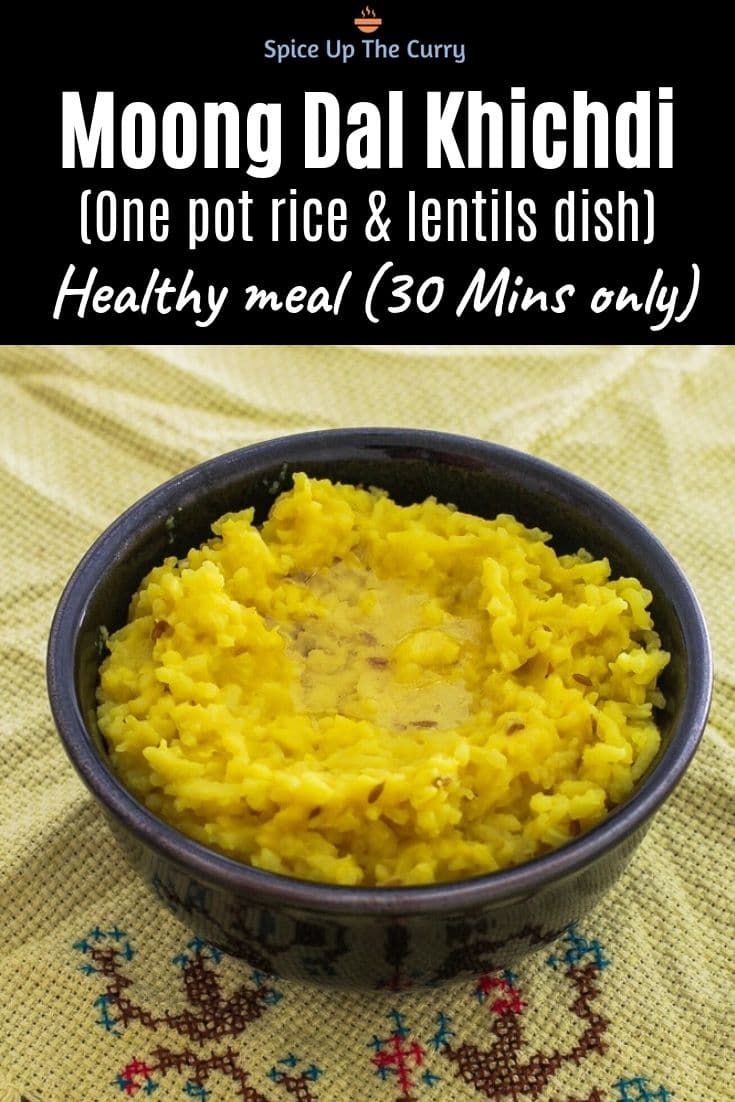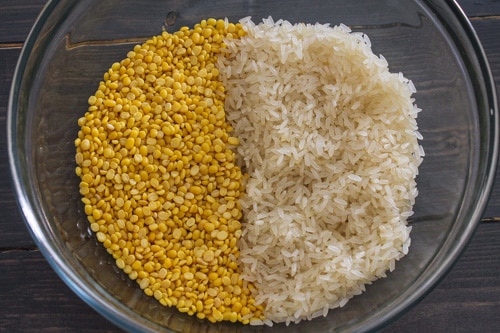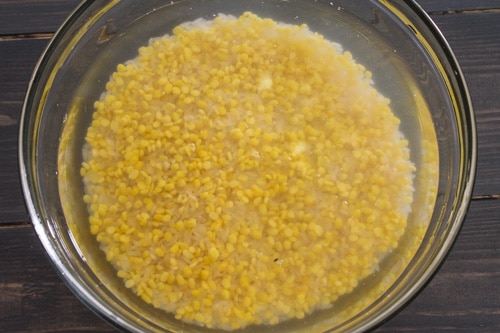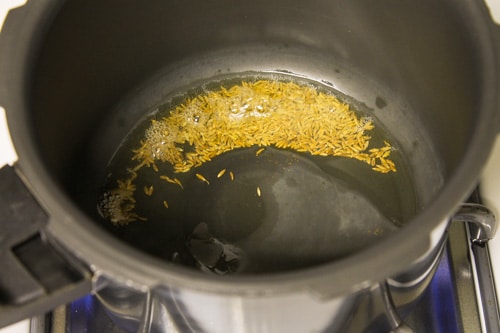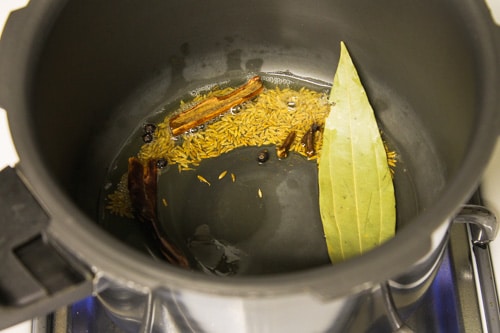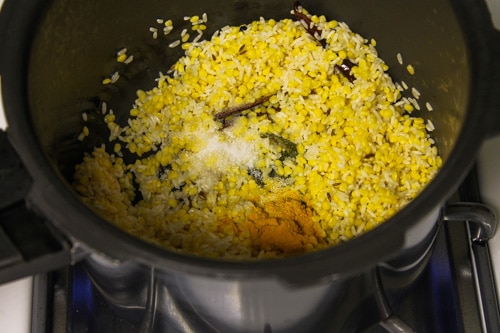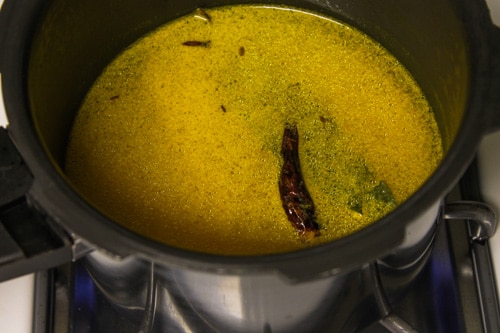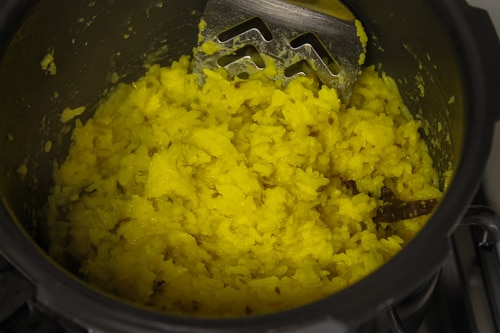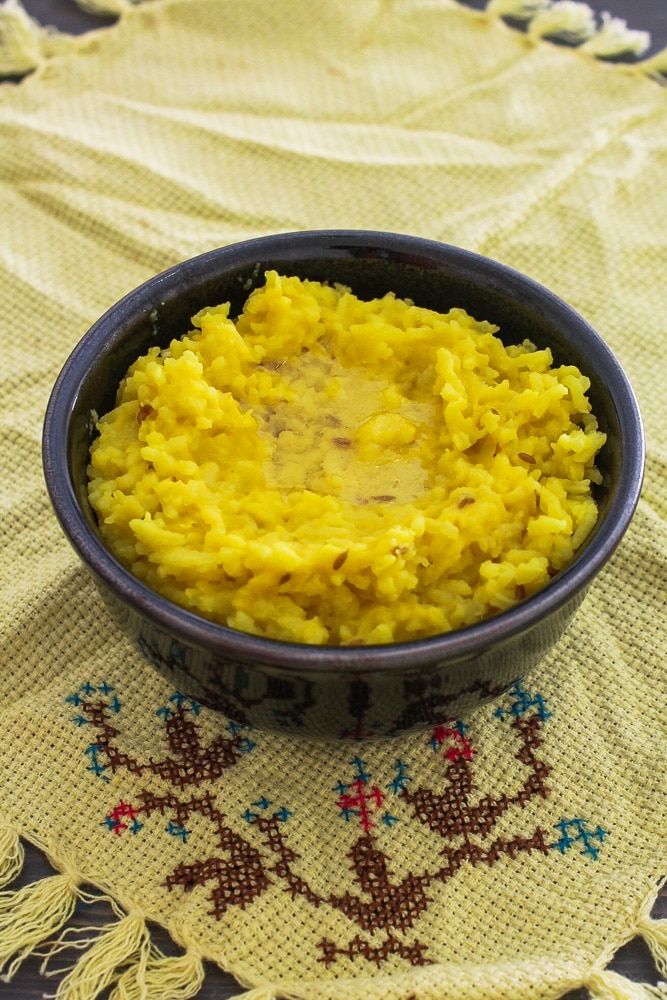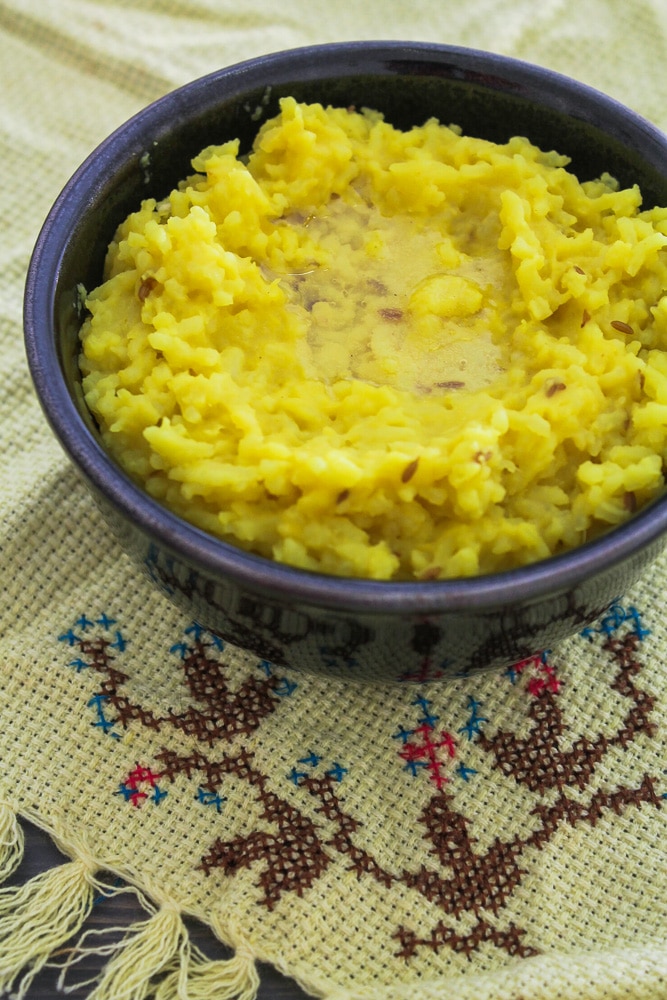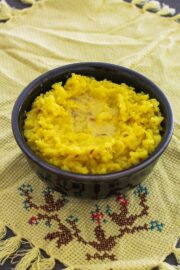What is khichdi? Khichdi is the one-pot dish made from rice and dal. If you literally translate, khichdi word means ‘mixture’ (here mixture of rice & moong dal, sometimes addition of veggies and spices). As per Ayurveda, moong dal khichdi is the traditional cleansing food. The texture of moong dal khichdi: It has porridge-like consistency. Pulao or biryani has each and every rice grain separated from each other. While in dal khichdi, it is overcooked till mushy, really soft and somewhat smooth. It gives a melt-in-your-mouth feel. One doesn’t need to chew, that’s why it is offered to babies as first solid food. The taste:
Addition of whole spices gives subtle warm flavor. Only turmeric powder is used. No other spice powders are added, so it is mild in taste. Ghee or clarified butter is the essential ingredient here. It adds its unique flavor to the dish. Here I have used ghee in tempering. And then at the time of serving, I drizzle some ghee on top.
Step By Step Photo Instructions
It is best served warm or hot. As it cools it gets thick. Storage: You can keep in an airtight container for 2-3 days. Warm up in the microwave before serving. But the leftover khichdi will not have the same consistency even after reheating. To get the right consistency, you may need to add some hot water while reheating.
Serving Ideas
If you eat the moong dal khichdi itself it is a little bland and mild. But when you pair it with spicy potato curry, it tastes really good. You can serve with kadhi. Khichdi kadhi is the best combo you will ever have. To make it a complete meal, you can have mango pickle and papad on the side. It is given to babies as a first solid food. It is served (without any sides) to sick people (who has a stomach ache, toothache, fever or cold) to soothe and make them feel better.
Expert Tips
it is recommended to use any short grain rice. because smaller grain rice cooks faster and gets mushy easily. But you can definitely use the long grain rice like basmati rice. If so, soak them for a little longer in order to get the mushy consistency. Instead of only moong dal, you can use a mixture of different dals e.g. moong dal with skin, toor dal, masoor dal. Water quantity may vary. You may need more water sometimes. It purely depends on the type, quality, and freshness of the rice and dal.
Variations
Dal khichdi is most common comfort food in India. Every region has its own version with slight variation in ingredients and cooking method.
Gujarati khichdi – just like this one, it is simple, mild and made with green moong dal with skin (chilka moong dal). Vaghareli khichdi – Another Gujarati style but with spices, peanuts, and fresh tuvar dana. Vegetable khichdi – added loads of veggies and spices to make it more nutritious and healthy. Masala khichdi – Simple khichdi with the addition of a few basic spice powders, onions, and tomatoes. Bisi bele bath – Karnataka style flavored with the special spice blend. Pongal – South Indian style. Primarily popular in Tamilnadu.
Few variations are made grain-free to consume during the Hindu fasting (vrat or upwas) days.
Sabudana khichdi Moraiyo khichdi (barnyard millet khichdi) Suran khichdi (elephant foot yam khichdi)
In modern days, few variations are made to eliminate or reduce the rice intake. Here rice is replaced with other grains.
Oats khichdi Dalia khichdi Qunioa khichdi
Did you try this moong dal khichdi recipe? I’d love to hear about it! Leave a review in the comment section below.
